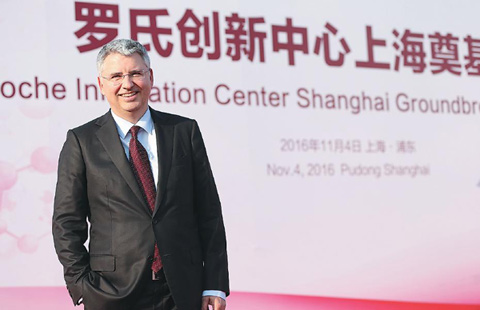Strategic study on FTAAP may be approved at APEC meeting in Peru
LIMA - The upcoming APEC Economic Leaders' Meeting in Peru may well approve the strategic study, which is part of the Beijing Roadmap to the Free-Trade Area of the Asia-Pacific (FTAAP), said Raul Salazar, a senior Peruvian official, in an interview with Xinhua.
"We have the obligation to continue our central topic, which is the approval of the collective strategic study, which was required by the roadmap established in Beijing in 2014. It is hope this year the leaders will approve the study as a step toward beginning negotiations for FTAAP," he expressed.
According to Salazar, senior official of Peru to APEC, "this strategic study justifies the start of negotiations."
Said document contains a mixture of initiatives destined to strengthen trade, reduce bureaucratic hurdles, permit SMEs to enter value chains, and improve connectivity, among other areas.
"China has contributed largely to pushing the idea of a free-trade area. This step taken in Beijing...has forced all the members to face the reality that this is necessary for a number of reasons. Peru holds the position that we need an Asia-Pacific free-trade area. It would allow for APEC's work to be deepened and would see free-trade agreements proliferate," said Salazar.
In this context, Salazar pointed out that APEC seeks for its members to voluntarily and unilaterally open up to free trade. He referred to examples such as the Trans-Pacific Partnership (TPP) or the Regional Comprehensive Economic Partnership (RECP), both of which are references for the FTAAP strategic study.
For the diplomat, APEC has already made great progress by reducing tariffs to a current average of 5.2 percent, down from over 20 percent. Work is also continuing to reduce this further for food exports.
Concerning the presence of President Xi Jinping, he said that "it is a privilege that he is not only participating in the APEC meeting but is also coming for a state visit. This is a very significant choice for Peru, as it shows an emerging economy, so far away, is identified as a trusted partner."
"I think that China, for a while now, has made many efforts to build a strong, consistent and structured relationship with Latin America. It began with investments, first largely to do with trade. Then, came investments in natural resources and extractive industries, which are important for trade and the Chinese economy. There is complementarity as Peru is very rich in minerals and natural resources. We feel privileged for this attention," he added.
Concerning integration within the region, Salazar responded that "we are aware that physical integration has been slow across the Andes and the jungle. But we have already taken important steps towards physical integration with Brazil and the Initiative for the Integration of the Regional Infrastructure of South America (IIRSA). We are doing our part."
He also pointed to the electrical interconnection Peru has with Ecuador and its plans to supply energy to Chile as other examples.
However, he admitted that China's investments would help in this regard. "I think the stimulus the Chinese government is carrying out is helping, such as the Trans-Oceanic Railway. There is a debate going on about the high costs, the benefits it would bring to Peru, and the route along which it will be built. There is also a very important decision to be taken as to how much Peru will have to invest. But the planning is being done correctly."
To conclude, Salazar said this physical integration would catch up with other integration policies within the Asia-Pacific region. For example, through the APEC Engineering agreement, 14 of the 21 APEC members now allow engineering students to have their studies officially recognized by all other members.
This is just one of the examples of economic and technical cooperation Salazar hopes to see take center stage at the APEC meeting in Peru.
- China can help drive development of emerging APEC economies, says Mexican expert
- Cooperation between China, LatAmerica seeks shared prosperity
- APEC informal leaders' meeting to attract 350 Chinese entrepreneurs to Peru
- Peru's firms peruse growth in China
- China's investment boosts Peru's GDP: Peruvian PM























